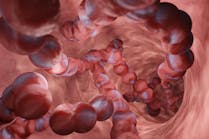The pipette is a reliable precision instrument that has been used and trusted for many years. However, as with many forms of instrumentation, a pipette will perform only as well as the operator's technique allows. Differences in technique—some more than others—can alter delivery volumes and impact data integrity. The following tips are a guide to proper pipetting technique to produce more accurate and precise laboratory results:
- Pre-wet the pipette tip. Aspirate and fully expel an amount of the liquid at least three times before aspirating for delivery. Failure to pre-wet increases evaporation within the tip air space, which can cause significantly lower delivery volumes. Pre-wetting increases the humidity within the tip, thus reducing evaporation.
- Work at temperature equilibrium. Allow liquids and equipment to equilibrate to ambient temperature prior to pipetting. The volume of liquid delivered by air displacement pipettes varies with relative humidity and vapor pressure of the liquid—both of which are temperature-dependent. Working at a constant temperature minimizes variation of pipetted volume.
- Examine the tip before dispensing the sample. Before dispensing, carefully remove droplets on the outside of the tip with a lint-free cloth, being sure to stay clear of the tip opening to avoid wicking liquid out of the tip. After dispensing, and before releasing the plunger, deliver any residual liquid remaining in the tip by touching the tip to the side of the container. Surface tension will help draw the remaining liquid out of the tip.
- Use standard mode pipetting. Depress the plunger to the first stop, immerse the tip into the liquid and aspirate by releasing the plunger. Remove the pipette from the liquid and depress the plunger to the second stop to dispense the entire contents. Standard (or forward) mode pipetting yields better accuracy and precision than reverse mode for all but viscous or volatile liquids. Reverse mode often results in over-delivery.
- Pause consistently after aspiration. After aspirating, and before removing the tip from the liquid, pause for one second. Make this pause as consistent as possible. Liquid continues to flow into the tip for a short time after the plunger stops. At the same time, evaporation within the tip is occurring. Pausing consistently balances these two effects and ensures correct aspiration.
- Pull the pipette straight out. When aspirating, hold the pipette vertically and pull the pipette straight out from the center of the container. This technique is especially important when pipetting small volumes (less than 50uL). Holding the pipette at an angle as it is removed from the liquid alters the volume aspirated. Touching the sides of the container causes wicking and loss of volume.
- Minimize handling of the pipette and tip. Hold the pipette loosely, and return it to the pipette stand or set it down between deliveries. Avoid handling pipette tips or containers of liquid to be pipetted. Body heat transferred during handling disturbs temperature equilibrium, which leads to variations in delivered volume.
- Immerse the tip to the proper depth. Before aspirating, immerse the tip adequately below the meniscus. Large volume pipettes (1 to 5 mL) should be immersed 5 to 6 mm, while smaller volume pipettes should be immersed 2 to 3 mm. Too little immersion, particularly with large volume pipettes, can lead to aspiration of air. Too much immersion can cause liquid to cling to the outside of the tip. Contacting the container bottom with the tip may restrict aspiration.
- Use the correct pipette tip. Use high-quality tips intended for use with the pipette. In most cases, manufacturer tips perform well. Alternate brands are also acceptable if their performance has been proven with the pipette model. Mismatched tips and pipettes can result in inaccuracy, imprecision, or both. Quality tips provide an airtight seal, are made of superior materials, and are free of molding defects—thus ensuring dependable liquid delivery.
- Use consistent plunger pressure and speed. Depress the plunger smoothly until coming to rest with a light and consistent force at the first stop. Immerse the tip; then release the plunger at a constant rate. It's all about rhythm—repeatable actions produce repeatable results.
Impact of Training
These pipetting technique guidelines were developed with the use of the Artel PCS®, a pipette calibration system that accurately and precisely measures liquid volumes in minutes. Based on proprietary Ratiometric Photometry, which measures light absorption by two specially formulated dye solutions, PCS can be used bench-top for continual training and performance verification.
Techniques among pipette users vary with background, personal preferences and training. These differences in execution can affect the accuracy and precision of laboratory results. To ensure accuracy and consistency, facilities should adopt standard operating procedures for pipetting technique and ensure that all operators are trained to an adequate level of proficiency.
Common Pipetting Errors
- Working too quickly
- Removing the pipette tip before sample aspiration is complete
- Dragging the pipette tip along the side of the container when exiting the sample
- Releasing the plunger too rapidly
- Not pre-wetting a new tip, particularly when working with volatile samples.
George Rodrigues, Ph.D., is Senior Scientific Manager at Artel. He can be contacted at [email protected].





